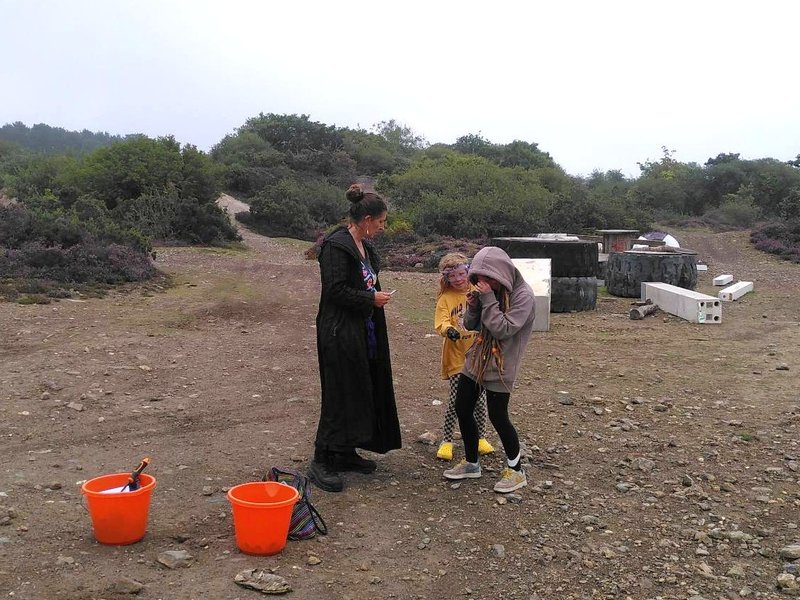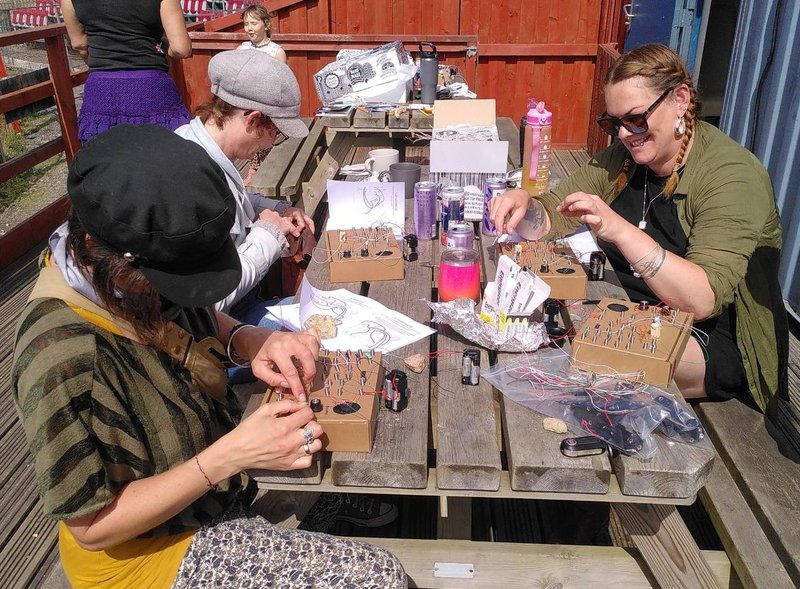Organised Atoms

Can we find what we need in discarded mine waste to create noisy electronic instruments with semiconducting crystals? We dismantle the myths of cyberspace and the metaverse, and show how the digital world is fully grounded in materials such as galena, quartz, pyrite, chalcopyrite, cassiterite and gold.
This project started as a workshop with Cornwall Neighbourhoods for Change and an exhibition on the 21st and 22nd October in Redruth where we experimented with the minerals of Cornwall. These original events were part of flamm, a pilot visual art-led event bringing internationally and nationally important work to Cornwall, enabling ambitious new work by locally-based artists and engaging communities and visitors in its multi-layered programme. Since then we've been awarded funding from the Royal Society of Chemistry to run two more workshops in 2024 and three upcoming for 2025, at the United Downs Raceway - a banger racing track on a disused mine site.
Lots more info on the project via the wiki here - including instructions for building your own Cornish cardboard crystal synthesisers!
In the time since the minerals in the rocks of Cornwall changed from liquids and assembled themselves, the sun has traveled round the centre of the galaxy once, and the mountains they were part of have been weathered away. More recently, it is thought that the Phoenicians secretly traveled from their homelands on the shores of the Mediterranean sea to trade with the Cornish for their cassiterite tin ore (which at the time could be scooped out of the Carnon river bed in vast quantities). The wealth accumulated from this period of extraction is still in living memory for many in Cornwall, but we have now become one of the most poor and unequal places in northern Europe. In the last 25 years our society has changed into one organised largely by computers and smartphones that combine the periodic fluctuations of quartz with the ordered and predictable regularity of silicon crystals.


This project is funded by the UK Government through the UK Shared Prosperity Fund; European Structural and Investment, Cornwall Council and Arts Council England. It has also been funded by the Royal Society of Chemistry.
